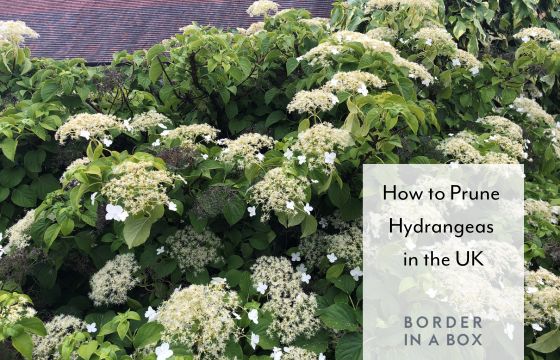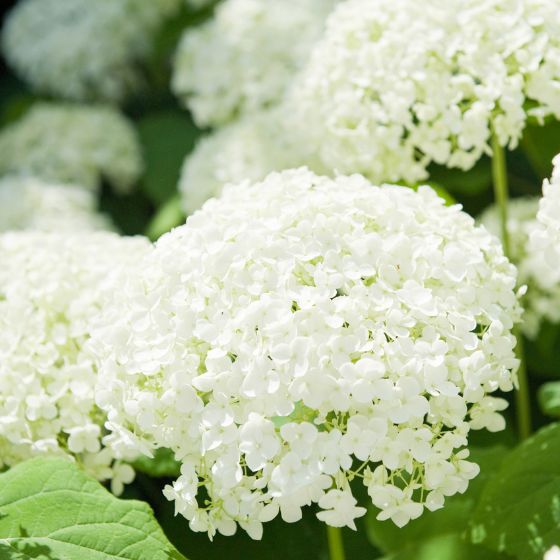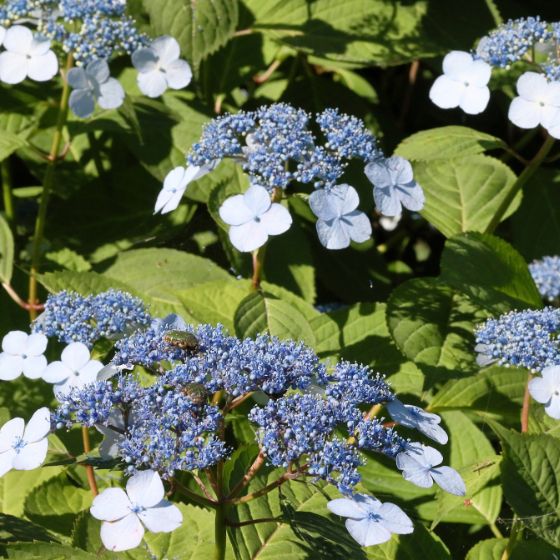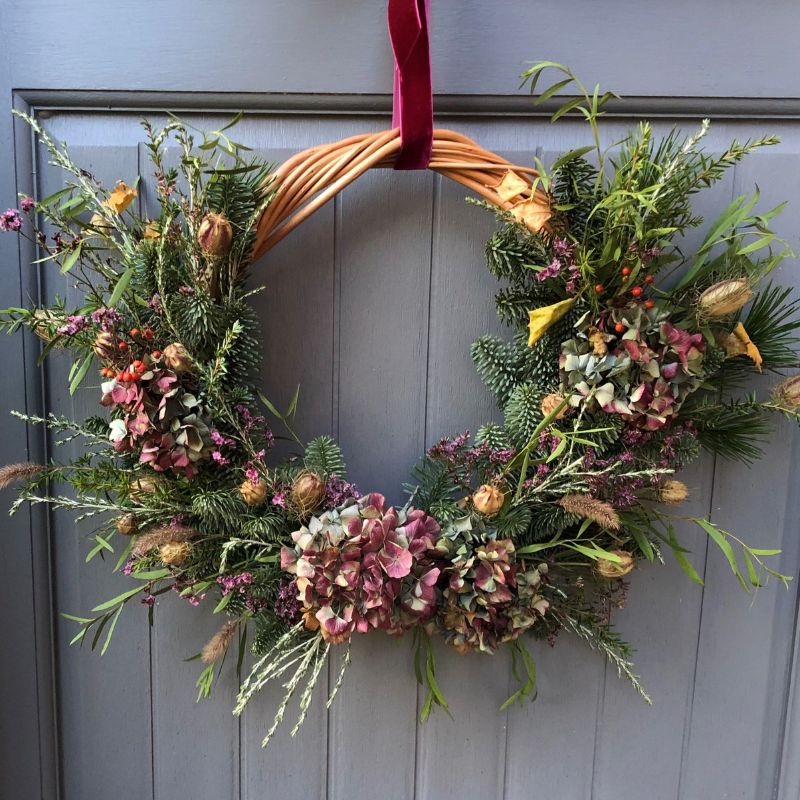How to Prune Hydrangeas in the UK

Hydrangeas are beautiful flowering shrubs that come in a variety of shapes, colours and sizes. They are easy to grow and maintain, but they do need some pruning to keep them healthy and flowering well. Pruning hydrangeas can seem daunting, especially if you are not sure which type of hydrangea you have or when to prune it. But don’t worry, here’s a simple guide on how to prune hydrangeas in the UK.

Hydrangea arborescens ‘Annabelle’
Why prune hydrangeas?
Pruning hydrangeas has several benefits:
- It removes dead, damaged or diseased stems and flowers, which can harbour pests and diseases.
- It improves the shape and appearance of the plant, making it more compact and bushy.
- It encourages new, vigorous growth that can produce more and larger blooms.
- It prevents the plant from becoming woody and congested, which can reduce flowering.
When is the best time to prune hydrangeas?
The best time to prune hydrangeas depends on the type of hydrangea you have. There are two main groups of hydrangeas: those that flower on old wood (last year’s growth) and those that flower on new wood (this year’s growth).
Hydrangeas that flower on old wood include mophead and lacecap hydrangeas (Hydrangea macrophylla), Hydrangea serrata, Hydrangea aspera and Hydrangea quercifolia. These hydrangeas should be pruned in spring, after the risk of frost has passed. The old flower heads should be left on over winter to protect the buds beneath.

Hydrangea mophead variety with blue flower
Hydrangeas that flower on new wood include Hydrangea paniculata and Hydrangea arborescens. These hydrangeas can be pruned in late winter or early spring, before they start to produce new growth. They can also be pruned more hardily than the other types.

Hydrangea paniculata – white flowers will turn pink as it matures
There is one exception to this rule: the climbing hydrangea (Hydrangea anomala subsp. petiolaris). This hydrangea should be pruned in summer, after flowering. It can tolerate hard pruning if needed, but this may reduce flowering for the next couple of years.
How to prune hydrangeas?
The best way to prune hydrangeas, as with all pruning, should be carried out with a sharp, clean pair of secateurs. This is to create a clean cut that is less prone to infection. The way that you prune your hydrangea will depend on the variety that you have, and to some extent the health of the plant.
Pruning mophead, lacecap, serrata, aspera and quercifolia hydrangeas:

Hydrangea lacecap with blue flowers
- Wait until you see new growth beginning to appear, normally mid to late March (the old flowers protect the new buds from frost).
- Cut off each flower head to just above the highest bud on each stem.
- Remove any weak or diseased stem by cutting them out as near to the base of the plant as possible.
- If your plant is very old or neglected, you can rejuvenate it by cutting off all the stems at the base. However, this will remove all the flowers for that summer, and the new stems will not bloom until the following year.
Pruning Hydrangea paniculata and Hydrangea arborescens
- Prune in mid-March to early April.
- Cut back all the stems to a length of about 30cm.
- Make the cuts immediately above a bud.
- Feed and apply a mulch.
Pruning climbing hydrangeas
- Prune in summer, after flowering.
- Cut back any overlong or unwanted shoots to a healthy bud or branch.
- Try to leave as much of the flowering growth as possible, as most flowers appear towards the top of the plant.
- If your plant is very old or overgrown, you can cut it back hard in spring. However, this may reduce flowering for the next couple of years.
NOTE: Hydrangeas prefer growing in moist, well-drained soil in dappled or partial shade. They’re unfussy about soil pH, however it can affect the colour of the flowers. Avoid dry, south-facing spots, which don’t suit hydrangeas.
Tips for pruning hydrangeas
Here are some tips to help you prune your hydrangeas successfully:
- If you are not sure which type of hydrangea you have, it is best to just deadhead it and observe how it grows. If you notice that it produces flowers on this year’s growth, you can prune it harder next year.
- After pruning, mulch your hydrangeas with well-rotted manure or compost to keep the soil moist and fertile.
- Water your hydrangeas regularly during dry spells, especially if they are in pots or exposed to sun or wind.
- Protect your hydrangeas from frost by wrapping them with fleece or horticultural bubble wrap in winter.

Dried hydrangeas make beautiful decorations such as this winter door wreath.
 Free Delivery
Free Delivery Upgrade to 24 Hour Tracked Delivery
Upgrade to 24 Hour Tracked Delivery

